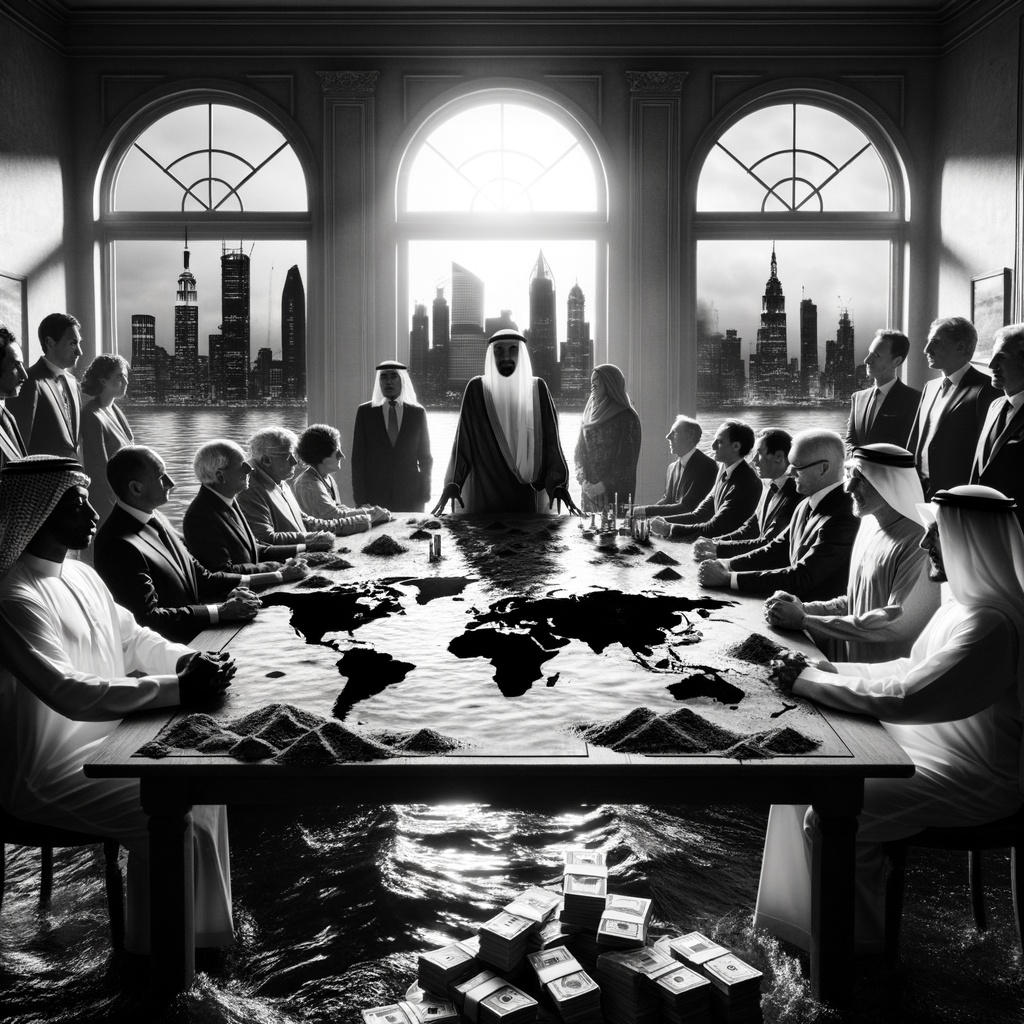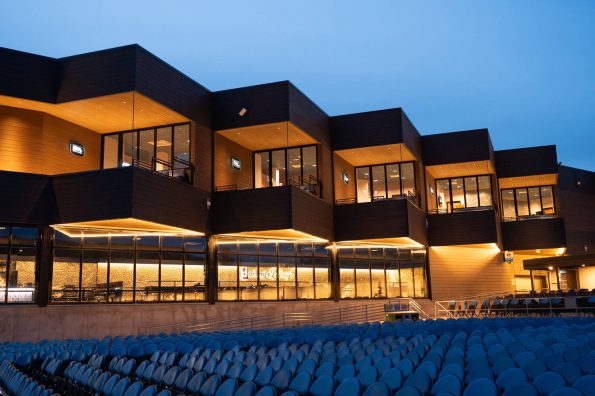Prologue: The Data
Let’s get down to the brass tax.
As a global species, we are now pumping almost 40 billion metric tons of CO2 into the atmosphere annually. And over the past 50 years alone, global temperatures had risen by approximately 1.2 degrees Celsius (2.2 degrees Fahrenheit) above pre-industrial levels. The two trends are in lockstep with one another providing compelling evidence that the warming of the planet is the direct result of human emissions.
So what is the tipping point? The scientific community and international agreements often refer to a global temperature increase of 1.5 degrees Celsius (2.7 degrees Fahrenheit) above pre-industrial levels as a threshold beyond which we can expect “significantly more severe climate impacts.” How’s that for ambiguous?
Here are some key points related to global temperature increase:
- 5°C Target: The Paris Agreement, a global climate accord adopted in 2015, set a goal to limit global warming to well below 2 degrees Celsius above pre-industrial levels, with an aspirational target of limiting it to 1.5 degrees Celsius. This 1.5°C target was chosen because it is associated with reduced risks of severe climate impacts.
- Impacts of Warming: Even a 1.5°C increase in global temperatures can have serious consequences, including more frequent and severe heatwaves, sea-level rise, increased risk of extreme weather events, and disruptions to ecosystems and agriculture. Beyond 1.5°C, these impacts are expected to become more pronounced.
- Tipping Points: Beyond a certain threshold, there is concern about triggering irreversible “tipping points” in the climate system, such as the melting of major ice sheets, which could lead to significant sea-level rise.
- Mitigation and Adaptation: Efforts to address climate change include both mitigation (reducing greenhouse gas emissions) and adaptation (preparing for and managing the impacts of climate change). Staying below 1.5°C or as close to it as possible is seen as a way to minimize the need for more drastic and costly adaptation measures.
And now the bad news, according to the Copernicus Climate Change Service, the global temperature in 2023 almost breached 1.5 degrees Celsius. Yup. You heard it correctly. This was mostly attributed to El Niño — a natural climate phenomenon that tends to boost the planet’s average temperature — but positions 2024 to be equally as warm. These significantly warmer years will only accelerate the overall warming trend and should alarm you.
What does this mean? Well, for starters, seas will rise further, fires will burn wider and hotter, displaced populations will increase and migrate further distances, and resources will continue to dwindle.
To be blunt, it’s going to get worse. Our best efforts of trying to reverse this trend using renewable energy are not working.
But we can’t give up. The species that created this mess is going to have to be the one that fixes it, or face serious existential consequences. And time is running out. The only thing that is controversial is how much time we have left until things become irreversible and really bad.
Keep these statistical facts in the forefront of your mind as you continue reading this blog.
The Climate Crisis: Recent Maine Weather Sounds An Anecdotal Alarm
It’s worth noting that in over the span of just under a week, our Portland architecture studio office was hit with unseasonably high temps, whipped with high winds (95 mph gusts) and deluged with over 8 inches of rain. Our building survived mostly unscathed but there was catastrophic damage to built infrastructure throughout the region with severe damage to coastal homes. Some were even being dislodged from their foundations and swept out to sea.
Storm surges and high tides waged indiscriminate flooding in Downtown Portland. The story as portrayed by the media was one of dark humor as people drank beers and canoed down Commercial Street. Some of our clients incurred devastating damages to investment properties and the media coverage left a sour taste in their mouth.
Just 3 weeks earlier, both Sunday River Ski Resort and Sugarloaf Ski Resort were wiped out with high temps, torrents of rain and high winds. Pounded by over 6 inches of rain in a single storm, an inconceivable amount of existing snow thaw occurred. There were literal rivers flowing down the mountains, washing out roadways, stranding tourists, closing ski resorts, and causing significant damage to the built environment throughout western Maine.
This might sound like a scene during hurricane season in Florida.
It was long whispered that Maine was one of the areas of the globe that would be safe from Climate Change. The prevailing consensus was that being far enough north of the equator Maine would adopt a more temperate environment. That is simply not the case. The mix of warm weather, snow and rain combined with tidal coastal areas and tidal inland estuaries, is proving to be a recipe for disaster.
Folks, no place on this planet is safe from Climate Change, even Maine. Climate Change is a planetary crisis and a crisis for all. And as long as we keep pumping fossil fuels into the atmosphere at the current alarming rate, it is going to get a lot worse.
So how did we get to here?
The Climate Crisis: Technology Doesn’t Add Up
The past 100 years of world history have seen dramatic changes and significant events. The period includes two world wars (World War I and World War II) that reshaped global politics and borders. America entered and left Vietnam. Three “once in an era” leaders were assassinated on U.S. soil. Decolonization led to the independence of many nations, and the Civil Rights Movement fought for racial equality in the United States. The latter half of the century witnessed the rise of the U.S. and the Soviet Union as world superpowers only to witness the collapse of the Soviet Union and the end of the Cold War. We witnessed the rapid advancement of technology, globalization, social progress, and the growing awareness of environmental issues such as climate change. It was a century marked by both advancements and challenges, social unrest and rebirth, and significantly shaped the world as we know it today.
In the tech sector, the amazing development of computer capacity and speed transformed the technology landscape. Processors became exponentially faster and capable of handling complex tasks. Storage devices evolved from bulky, low-capacity main-frames the size of a living room to hand held devices with ultra-fast and spacious solid-state drives. Computers evolved at an almost cataclysmic rate and spawned the rapid advancement of artificial intelligence, data analytics, and immersive virtual reality experiences. And what was once an entertaining sci-fi fantasy, we are beginning to get a first look at the potential of James Cameron’s apocalyptic reality.
And yet energy technology over the past 100 years remained stagnant. In the early 20th century, the world primarily relied on coal and later oil for energy generation and transportation. Today, we still burn coal, oil and now natural gas for the vast majority of our energy needs. We still drive variations of the internal combustion cars from 100 years ago. We have a smattering of renewable energy sources like wind, solar, and hydropower, that have done little to offset emissions. Viable and affordable alternatives to oil, coal, and natural gas have not been afforded us. It’s that simple.
Has the energy tech sector really been stagnant? Whispers of advanced technologies (such as zero point energy, the quantum vacuum, and effective fusion energy devices) are becoming louder and louder. A growing group of voices are providing increasing evidence that better technology from visionaries like Nichola Tesla has been kept from becoming mainstream, for it would empower us, diminish government influence and control, and create a new paradigm shift in geopolitical relationships. Folks, the fossil fuel system is being propped up, protected, and leveraged, and has been for decades and decades.
And yet meanwhile, climate change is causing devastating effects on planet Earth. Rising temperatures are leading to more frequent and severe heatwaves, droughts, and wildfires, endangering ecosystems and human communities. Melting ice caps and glaciers are contributing to rising sea levels, which threaten coastal cities and low-lying areas with flooding (as we saw in Maine over the past week). Ocean acidification is harming marine life, and extreme weather events are becoming more common, resulting in economic losses and displacement of people. Additionally, climate change is directly impacting agriculture, food security, and water resources, and is posing a significant global challenge that requires urgent action to mitigate its consequences.
Put bluntly, world governments need to step up. Countries are reluctant to sacrifice their economy for the good of the planet out of fear that they will lose current power and influence. Countries like the United States, love to talk tough about climate change and yet our emissions per capita still outpace the rest of the world. The Western World points an accusatory finger at India and China for being the world’s biggest contributors of C02 into the atmosphere. Combined, they exceed over 2B of the world’s population so of course they are the biggest polluters by country. But it is an intentional obfuscation of which population groups are really causing disproportional damage.
COP28 & The Net Zero Initiative & How It Must Succeed (& Will Fail)
The recent COP28 summit in Dubai has sparked up familiar talking points and social media trends that continue to warn us that humans are doing a highly efficient job at destroying planet earth. They are intentionally implicating all of us in a crisis the common citizen is not responsible for.
“We have reached a serious turning point,” world leaders said at COP28. Heard it before? So have we. Every few years there is a new carbon reduction initiative with a date further and further into the future. 2030. 2040. 2050. Summit after summit is held with strong talk, but meager agreements, and weak initiatives, and no real measurable change. “It takes time,” they say.
What they are doing is buying time. They are stalling. There have been so many of these summits that it is hard to tell which once is which, what happened, and what, if anything, is going to change. What they don’t tell you is that our reliance on crude oil is an immensely complex geopolitical problem that threatens to disrupt the global power dynamic. They are struggling with how to agree that some countries may get weaker in the short term by moving away from fossil fuels, while the planet gets collectively stronger.
Consequently, you simply cannot blame the common citizen for the state of things on planet earth. We are waiting for policy changes. We are waiting for subsidies. We are waiting for new technology. We are using the technology that has been given to us to heat, cool, and transport at what we can afford.. If we are to adopt new technologies and strategies that help save the environment they must be affordable solutions in meeting our individual needs. What they also won’t tell you is there needs to be significant changes in government policy that empowers the common citizen to make sensible decisions for themselves that directly, but collaterally, benefit the health of the planet.
New tech and/or aggressive government subsidy of renewable energy is the answer but both of these suggestions will threaten the viability of an immensely powerful group: OPEC. As long as there is oil to be pulled from the earth, OPEC will ensure fuel emissions. Sorry to burst everyone’s oil bubble but good luck with winning that battle. Our reality is that we live in a world of massive geopolitical power leveraged around the access to crude oil (mixtures of hydrocarbons that formed from the remains of animals and plants that lived millions of years ago in a marine environment before dinosaurs existed) and to a lesser extent natural gas.
While at the COP28 conference, Andy Cohen, CEO of the world’s biggest firm, GENSLER, said that “Taking climate action is the moral and business imperative of our time. The building sector has an important role to play in this effort. The built environment is responsible for some 40% of all carbon emissions, and a large proportion of those emissions come from the manufacturing and transportation of building materials.” He’s getting this number from the World Green Building Council’s report that was released in 2019. In the world of ever-changing climate change science, this report is old. And the number is likely higher.
So with governments at a perpetual and blatant standstill to make a significant impact, the new buzz solution is to start comprehensive initiatives to build to a Net-Zero building standard, putting responsibility on private enterprise, the common citizen, and us Architects, independent of government agency, to help solve the climate crisis. The concept is that all new construction would be Net-Zero, and begin to chip away more aggressively from the 40% emissions from buildings. But is this aggressive enough to turn the tide of emissions and who the hell is going to pay for all these additional Net-Zero Energy costs for our new buildings?
The great energy solution of COP28 is to pass the buck to private citizens and private corporations to design buildings to a Net-Zero Design standard?




